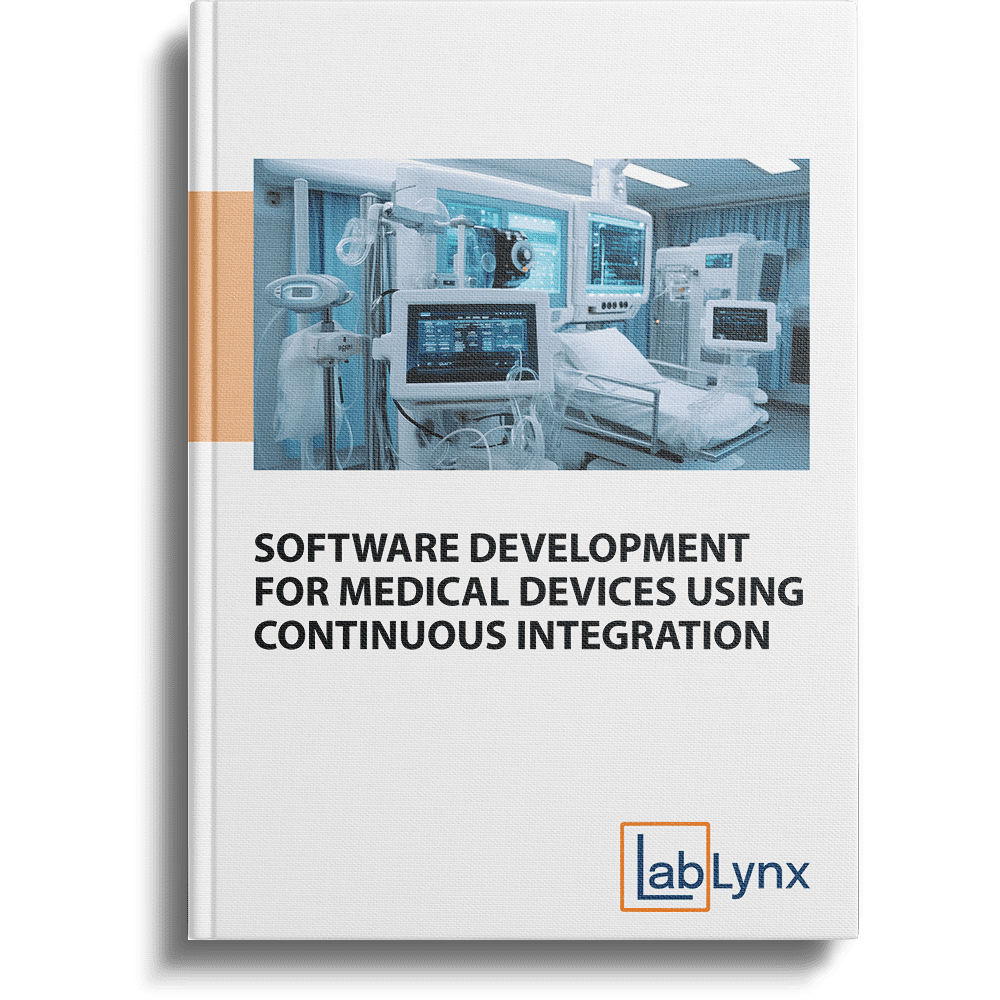Download Book For Free!
Resource Download
"*" indicates required fields

Revolutionizing Medical Device Software Development: The Power of Continuous Integration
In the rapidly evolving landscape of medical technology, software has become an integral component of medical devices. From diagnostic equipment to implantable devices and treatment delivery systems, software plays a crucial role in ensuring the safety, efficacy, and reliability of these life-saving tools. To meet the stringent regulatory requirements and high-quality standards of the medical device industry, modern software development practices like Continuous Integration (CI) are becoming indispensable.
Understanding Continuous Integration (CI)
Continuous Integration is a software development practice where developers regularly merge their code changes into a shared repository. Automated builds and tests are then triggered to verify the integrity of the codebase. CI aims to catch and address integration issues early in the development cycle, leading to faster development, improved code quality, and reduced risk of errors.
Benefits of CI in Medical Device Software Development
- Early Error Detection: CI automates testing, allowing for early identification and resolution of integration issues, bugs, and vulnerabilities. This reduces the risk of costly and potentially dangerous errors in the final product.
- Improved Code Quality: Frequent integration and testing encourage developers to write modular, well-tested code, leading to a more robust and reliable software product.
- Faster Development Cycles: CI automates repetitive tasks, accelerates feedback loops, and streamlines the development process, resulting in faster time to market for medical devices.
- Regulatory Compliance: CI helps maintain a comprehensive audit trail of code changes, test results, and other artifacts, facilitating compliance with regulatory requirements like FDA 21 CFR Part 820.
- Risk Mitigation: By identifying and addressing issues early, CI minimizes the risk of costly recalls, malfunctions, and patient harm.
Implementing CI in Medical Device Software Development
- Version Control: Use a version control system (e.g., Git) to track code changes and enable collaboration among developers.
- Automated Build & Test: Set up a CI server (e.g., Jenkins, GitLab CI) to automatically build and test code upon each commit to the repository.
- Test Suite: Develop a comprehensive suite of automated tests that cover unit tests, integration tests, and system tests.
- Continuous Feedback: Provide developers with rapid feedback on test results to facilitate quick identification and resolution of issues.
- Code Quality Tools: Integrate static code analysis and code review tools to enforce coding standards and detect potential vulnerabilities.
- Artifact Management: Store build artifacts and test results for traceability and documentation purposes.
- Regulatory Compliance: Ensure that your CI process adheres to regulatory requirements and generates the necessary documentation.
Challenges and Considerations
Implementing CI in medical device software development may present some challenges:
- Regulatory Constraints: The medical device industry is heavily regulated, and CI processes must be validated and documented to ensure compliance.
- Legacy Systems: Integrating CI with legacy systems and tools can be complex and may require additional effort and resources.
- Test Environment: Creating and maintaining a representative test environment that mimics the production environment can be challenging.
LabLynx and Continuous Integration
LabLynx understands the complexities of medical device software development and the importance of CI. Our Laboratory Information Management System (LIMS) solutions can be integrated with your CI pipeline to provide:
- Data Management and Traceability: Ensure data integrity, traceability, and compliance by integrating with your CI/CD pipeline.
- Test Automation: Automate the testing of LIMS functionality within your CI environment.
- Regulatory Support: LabLynx LIMS is designed with regulatory compliance in mind, facilitating documentation and audit trails.
